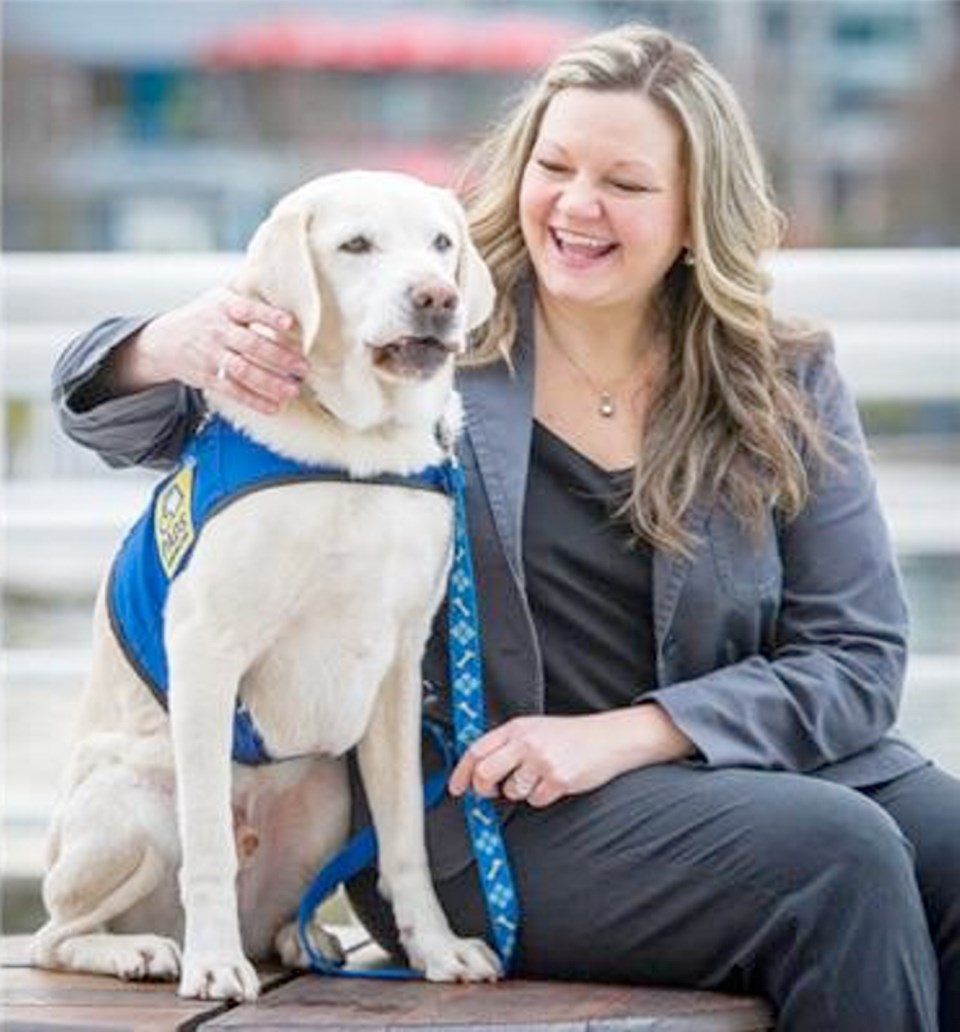Kim Gramlich is an award-winning victim services worker with two decades of experience in Metro Vancouver police agencies, but there are still some jobs she says her partner is better equipped to handle — even though he can’t speak.
Gramlich is the primary handler for Caber, a seven-year-old Labrador retriever described by Delta Police as “the first trauma K9 in a victim services setting in Canada.”
“He is able to help people in ways that I am not, and in ways that humans are not able to,“ Gramlich said. “I just find that people create this instantaneous bond with a dog that you can’t really create with another human being who’s a stranger.”
Caber is an accredited assistance dog who, with the help of Gramlich and other handlers, provides support to victims and witnesses of trauma and crime. Police say dogs like Caber can reduce a person’s blood pressure, encourage communication, and defuse extreme emotions.
Law enforcement agencies across Canada have taken note of Gramlich and Caber’s success. In the five years since the pooch joined Delta PD, 10 other trauma dogs have taken on similar roles in police agencies across Canada, including departments in Alberta, Saskatchewan and Ontario, Gramlich said, and more than half of those were trained at the Pacific Assistance Dogs Society (PADS), as Caber was.
Other police departments have already applied to PADS for trauma dogs of their own, she said, and she receives calls every week from law enforcement agencies looking to learn more.
“We say our dogs choose the job, we don’t choose it for them,” said Gramlich. “It became obvious very quickly that Caber was the right dog; it’s his extremely calm, stable temperament.”
His docile demeanour is immediately apparent. Sunday afternoon, Caber appeared on Science World’s main stage in a presentation for a crowd of more than 150 onlookers, mostly children. Immediately following the demonstration, dozens of excited kids rushed the stage to pet Caber, who barely reacted.
Caber has engaged with about 800 people during his police service, estimated Gramlich, beginning in the aftermath of the 2010 murder of Delta teen Laura Szendrei, a high-profile case that shocked the community and brought him into contact with large groups of grieving friends and family.
Last May, Caber became the first dog used in a B.C. courtroom, where he provided support to a child victim of sexual assault, helping to calm her so she could testify at a trial.
Such programs will only become more common in the future, predicted Delta Police Chief Neil Dubord. Before Dubord became chief of Delta Police last year, he had no experience working with trauma dogs in other police departments. But after seeing the work of Gramlich and Caber together, Dubord said Sunday: “I cannot see the DPD being without a trauma dog ever again.”
“I am sure you will see trauma dog programs being developed in police departments across Canada in the next five years,” Dubord said. “The program is cost effective, extremely efficient, provides comfort to victims and builds the relationship between the public and the police.”



